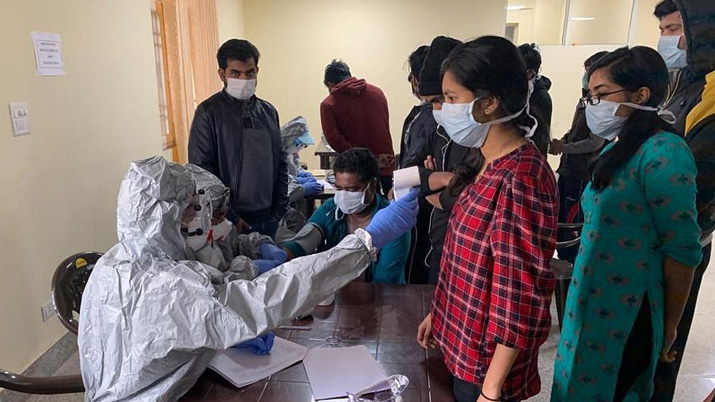India had one of the highest Covid-19 cases last year but low fatality rates. Daily infections plunged late last year but are climbing again. The number of new COVID-19 cases in the country appears to have plateaued amid concerns from experts that we’re about to enter another surge.
It was in September last year that India overtook Brazil to emerge as the second worst-hit country by the Covid-19 pandemic. The country even seemed poised to overtake the US in November, but infections began plummeting mysteriously to around 10,000 cases a day.
Today, infections are surging again, but even at the height of the pandemic, Covid-19 was less severe for Indians. Most showed mild symptoms, and compared with other countries, relatively few infected patients died. India has just about 115 deaths per million, while the US reports 14 times more deaths at 1,600 per million. Dr Vineeta Bal, an immunologist and visiting faculty member at the Indian Institute of Science Education and Research in Pune, said one possible reason for the less severe nature of Covid-19 in India could be that its population was already exposed to many pathogens, which she described as “common cough-and-cold kind of coronaviruses”. Dr Bal noted, given the absence of data on the prevalence of previous coronavirus infections in India. “So did we have it (cross-immunity) to the extent that there might have been some protection that was offered? As an immunologist, I can say it is a possibility but do I have proof for it? No.”
Professor Gautam Menon, Delhi-based Ashoka University’s a physics and biology expert who models infectious diseases, said: “It is hard to see what prior exposure might protect Indians specifically, but not, say, Brazilians or Mexicans, given that viruses and bacteria don’t respect national boundaries and our climatic conditions are not very dissimilar.”
Epidemiological estimates also suggest that deaths may be undercounted, and that the true numbers could be two to five times more.
“If you compute fatalities in urban regions of India, rather than looking at pan-Indian numbers, accounting for such undercounting, the numbers are not too far from the Covid-19 fatality rates reported from elsewhere,” added Prof Menon.


